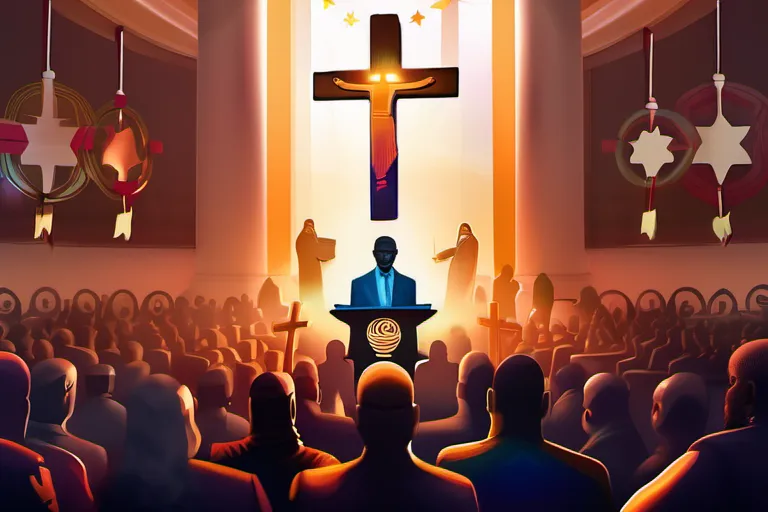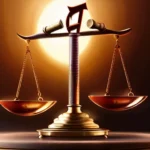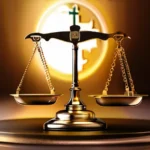Exploring the Intersection of Faith and Government in a Democratic Society
In this article, we delve into the complex relationship between religion and democracy. We will examine historical examples, current trends, and potential future scenarios to determine whether these two powerful forces can coexist harmoniously.
The Historical Evolution of Religion and Democracy
Imagine traveling back through time to the cradle of democracy, ancient Athens. How did religion intertwine with governance in this birthplace? The city-state, as it was known, saw a blend of civic and religious life, where participation in public affairs was seen as a form of worship. But could one truly separate political duties from spiritual ones?
In Athens, the Areopagus served not only as a legislative body but also as a place for philosophical discussions, blending governance with intellectual pursuits that were deeply rooted in religious and mythological stories. Here, citizens would gather to ponder the laws of gods and men, asking rhetorical questions like: ‘Can we truly govern ourselves without understanding our divine origins?’
Fast forward to the Renaissance, a period when thinkers began questioning traditional authorities, including religious ones. The Pax Romana metaphorically echoed in the idea of a harmonious society where religion and politics could coexist more freely—though it was often the church that wielded significant power.
The Reformation further complicated this relationship, as Protestantism emphasized individual interpretation over clerical authority. This shift introduced a new layer to the question: ‘Can a government founded on principles of religious freedom still uphold democratic ideals?’
Jumping ahead to modern democracies, one cannot ignore the influence of religion in shaping public policies. In countries like India and Turkey, for instance, the interplay between religious beliefs and governance is evident, often leading to debates about secularism versus theocracy.
The historical evolution of religion and democracy has been a winding path, full of challenges and compromises. As we move forward, the question remains: Can these two pillars of human society coexist in harmony? Or will they always be at odds?
The Role of Religion in Democratic Governance
Can religion and democracy coexist? It’s a question that has puzzled thinkers for centuries, much like trying to fit a square peg into a round hole. In a democratic society, where every voice matters, how do we reconcile the sacred principles of faith with the secular structures of government?
The role of religion in democratic governance is not just about lip service or superficial nods during public ceremonies. It delves deeper into how religious beliefs and practices influence decision-making processes. Imagine a grand orchestra where each musician represents different segments of society—religious, political, economic, social. In this symphony, the conductor must ensure harmony without imposing their will on any single instrument.
Religious leaders often serve as moral compasses in a democracy, offering guidance and ethical considerations that can shape public policy. But what happens when religious teachings conflict with democratic ideals? Should laws be tailored to accommodate religious practices, or should they remain neutral and inclusive for all citizens?
The influence of religion on governance can vary widely. In some cases, it fosters a spirit of communal service and social justice. However, in others, it can lead to theocracy or the entrenchment of a particular faith’s values over secular law. The key lies in finding that balance where religious freedom is respected while ensuring equal rights for all citizens.
How do we navigate this delicate equilibrium? Perhaps by recognizing that religion and democracy are not adversaries but rather complementary forces when they work together constructively. It’s about fostering a culture of dialogue, understanding, and mutual respect among different faith communities and the broader populace.
Case Studies: Successful Coexistence
Can religion and democracy coexist? The answer, as history has shown, is often yes, but with careful navigation and thoughtful integration. Let’s explore two notable examples where these seemingly disparate concepts have coexisted harmoniously.
India: Consider India, a country that stands out in its successful blending of religion and democracy. The Indian Constitution guarantees freedom of religion while also upholding secularism as the guiding principle. This unique mix has allowed religious diversity to flourish within a democratic framework. For instance, during election periods, political parties often engage with various communities, understanding that catering to their religious sentiments can influence voting behavior. Yet, this engagement is not merely about pandering; it’s about genuine respect and inclusion. How can we reconcile the need for secular governance with the reality of a deeply religious populace? India shows us that it’s possible when done with wisdom and fairness.
The United States: The U.S., with its First Amendment guaranteeing freedom of religion, offers another compelling case study. Here, religion plays a significant role in public life without compromising the democratic process. Religious organizations are active participants in political discourse and social movements. However, this involvement is strictly separated from governmental functions to ensure that no single religious group can dominate or dictate policy. The question arises: How does one maintain a balance between religious freedom and the need for a unified, inclusive government? The U.S. model suggests that by establishing clear boundaries and fostering an open, pluralistic society, both religion and democracy can coexist peacefully.
These case studies illustrate how religions can find their place in democratic societies without eroding the principles of equality, justice, and freedom. They serve as beacons, showing us that with thoughtful governance and mutual respect, even the most challenging intersections between faith and politics can be navigated successfully.
Challenges and Controversies in the Intersection of Religion and Democracy
Can religion and democracy coexist harmoniously? The question looms large, much like a shadow that follows a figure in a dimly lit room. When religion and democracy come into contact, they often seem to clash, creating a dynamic tension between faith and freedom. One of the most contentious issues is religious freedom itself. How can a government ensure that every individual’s beliefs are protected without favoring one religion over another? This becomes a delicate balance, like trying to pour water from one cup to another without spilling any.
Secularism, often seen as the guardian of this delicate equilibrium, faces its own set of challenges. Is secularism merely about separating church and state, or does it go deeper into establishing a framework where no single religion holds sway? Critics argue that true secularism should protect all faiths equally, but others fear it can lead to a bland uniformity, stripping away the rich tapestry of diverse beliefs.
The controversies surrounding these issues are profound. For instance, when religious leaders gain political power, they often face criticism for using their platform to influence public policy in ways that may not be universally accepted. Is this an abuse of power, or a natural expression of faith influencing governance? Another point of contention is the role of religion in education and public spaces. Should religious symbols and practices have a place in government buildings or schools? These questions are akin to threading a needle; one misstep can unravel the fabric of societal harmony.
The journey towards reconciling religion and democracy isn’t without its twists and turns. Each case study reveals both successes and failures, pushing us to question our own beliefs and values. As we navigate these complex waters, it becomes clear that finding common ground requires open dialogue, mutual respect, and a willingness to find creative solutions. In the end, the challenge may be less about coexistence than it is about creating a society where diversity isn’t just tolerated but celebrated.
The Future of Religion and Democracy
The future of religion and democracy is like a ship navigating through uncharted waters, its course determined by global trends and societal shifts. Will these two pillars of society coexist harmoniously, or will they clash in unforeseen ways? Some predict a harmonious blend where faith and governance complement each other, fostering a society that respects both the spiritual and the civic realms. Others fear a catastrophic divide, where religious fervor trumps democratic principles, leading to polarized communities and potential conflicts.
One scenario is a world where technology plays a pivotal role in shaping public opinion and political discourse. Imagine a future where social media platforms become the battlegrounds of ideological wars, amplifying voices from both sides and potentially driving a wedge between religious minorities and the majority. How will democratic institutions adapt to these new realities? Will they develop frameworks that balance freedom of speech with the protection of minority rights?
Another possibility is the rise of globalization, which could bring about a more interconnected world where religions and democracies interact on a larger scale. This might lead to increased cross-cultural dialogue, fostering mutual respect and understanding. However, it also poses challenges as diverse religious communities adapt to democratic systems that may not align with their cultural or traditional values.
Lastly, the environmental crisis could become a catalyst for both cooperation and conflict between religion and democracy. As natural disasters and climate change become more frequent, religions might play a crucial role in mobilizing humanitarian efforts and promoting sustainable policies. But this collaboration could also spark debates over the extent to which religious beliefs should influence government decisions on issues like resource management and environmental protection.
As we look towards the future, it is clear that the relationship between religion and democracy will continue to evolve. The key question remains: can these two forces coexist in a way that benefits all members of society? The answer lies not just in technological advancements or global trends but also in our ability to foster dialogue, empathy, and understanding across different communities.
Strategies for Promoting Coexistence
Can religion and democracy coexist? A question that has puzzled minds for centuries. As we navigate through today’s complex world, this query takes on new significance in our modern democratic societies. How can we ensure that both faith and freedom flourish side by side?
The answer lies not just in legal frameworks but also in fostering a cultural environment where mutual respect is the cornerstone. One strategy is to promote dialogue between religious communities and governmental bodies. By setting up platforms for open discussions, we can address concerns and misunderstandings that often arise from differing perspectives.
Another approach is to encourage education. Schools should teach about various religions in a way that fosters an understanding of diverse beliefs and practices. This not only helps in breaking stereotypes but also prepares future generations to be more accepting and inclusive citizens.
Involving religious leaders in the public discourse can also play a pivotal role. These individuals often have significant influence within their communities, and their participation can help bridge gaps between different sectors of society. By engaging them constructively, we can leverage their expertise for the betterment of our democratic processes.
Lastly, creating inclusive policies that respect religious freedoms while also upholding the principles of democracy is crucial. This requires careful consideration and a balanced approach to ensure that no one group feels marginalized or oppressed.
By implementing these strategies, we can pave the way for a more harmonious coexistence between religion and democracy. After all, in a truly democratic society, every voice deserves to be heard, and every belief should have a place at the table.
Can you imagine a world where such a balance is achieved? A world where freedom of conscience and civic engagement go hand in hand?
Conclusion
 By understanding the intricacies of the relationship between religion and democracy, we can foster a more inclusive and tolerant society that respects both religious freedom and democratic principles.
By understanding the intricacies of the relationship between religion and democracy, we can foster a more inclusive and tolerant society that respects both religious freedom and democratic principles.











